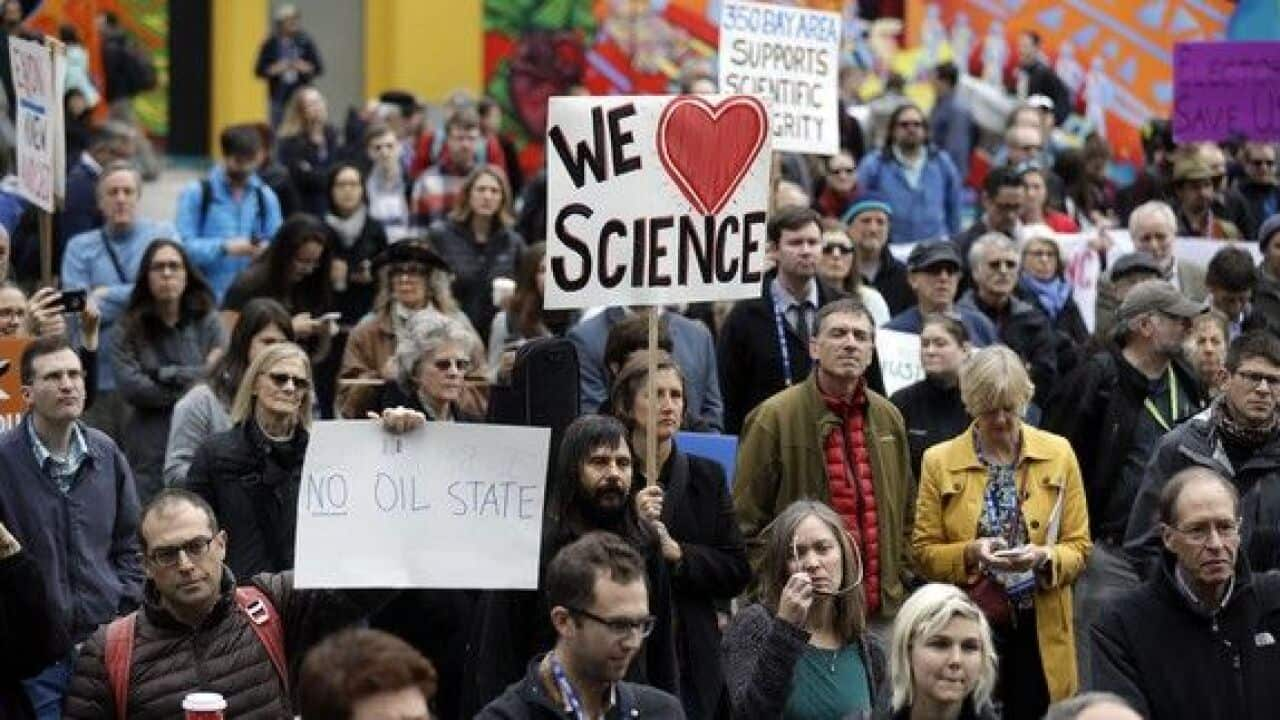Around 120 Indigenous students from Sydney participated in the annual Indigenous Science, Technology, Engineering and Mathematics (STEM) camp, which aims to inspire Aboriginal youth to intertwine culture and knowledge.
The first part of the annual Indigenous STEM camp kicked off at Bundeena National Park in Sydney's south. The camp focused on motivating students to explore the endless amount of career opportunities STEM offers.
To have the opportunity to re-introduce our black history and inventors such as David Unaipon goes to the heart of our culture in keeping our stories alive.
Jingirdba-Wanuginbi man Luke Briscoe is fighting for recognition of Indigenous science through his company - - an organisation that played a vital role in the STEM camp.
"The way Aboriginal people innovated and developed tools plus technologies was born out of both necessity and sustainability. The 'boomerang' influence on the propellers is proof that Indigenous people are still practicing our culture that dates back over 80,000 years," he said. Indigi Lab CEO and Founder says by using programs such as Boomerang to the Drone, we can see how Indigenous science and innovation was used in the past, which could help save humanity.
Indigi Lab CEO and Founder says by using programs such as Boomerang to the Drone, we can see how Indigenous science and innovation was used in the past, which could help save humanity.

Source: NITV News
“Above the surface Indigenous culture may seem like a bunch of epic tails of myths and legends, but there is a science to it all... Indigenous science is uncovering many truths about humans and the universe," he explained.
"Through our programs we explore how Indigenous science can manifest into everyday life. The Boomerang to the Drone is just one example of how our ideas have been adapted in a modern day context. There’s no time like the present to learn how we can unlock these sciences."
All across the globe you can find various forms of the Boomerang, but the returning one is the Boomerang found in Australia. For NITV News Producer and INDIGI LAB workshop facilitator, Danny Teece-Johnson, the history of Indigenous inventors like David Unaipon, have paved the way for Indigenous ingenuity to be respected.
“Technology is so fast flowing. A lot of inventors that first created technology would be lost to most young people today. To have the opportunity to re-introduce our black history and inventors such as David Unaipon goes to the heart of our culture, and keeps our stories alive," he said.
"Now when kids look at planes, they think of the propeller and ultimately the Boomerang. All because one man from a remote community in South Australia had a vision and a dream and didn’t give up on it in a very racial climate.” INDIGI LAB Workshop facilitator and leading Australian technology reporter, Djuro Sen has travelled the world to report, review and analyse the latest tech gadgets and news. But he says what's occuring here at this workshop, located in his very own backyard, is far more interesting.
INDIGI LAB Workshop facilitator and leading Australian technology reporter, Djuro Sen has travelled the world to report, review and analyse the latest tech gadgets and news. But he says what's occuring here at this workshop, located in his very own backyard, is far more interesting.

Source: NITV
"Our work is truly ground breaking - we are really articulating and defining how Indigenous technology and concepts can adapt and even lead the way for new forms of technologies to exist," he said.
What is even more exciting is that our Indigenous technologies and sciences are designed through a sustainable lens, which is what's missing everywhere else."
"This is about providing a real Indigenous STEM education pathway, a pathway that will continue culture rather than assimilate into a western education system.”
Briscoe says this workshop was a result of the need for more Indigenous inclusion and perspective in STEM that INDIGI LAB aims to provide.
“When we share interesting success stories you can see the kids’ faces light up. This is about providing a real Indigenous STEM education pathway - a pathway that will continue culture rather than assimilate into a western education system," he said.
"Next year we will be launching an that we hope all schools around Australia will take part in. The Boomerang to the Drone is just a glimpse of how we are re-imaging Indigenous uses of technology that can be modernised."
The camp lured students from 11 remotes schools and was a joint initiative between the and schools, theand the newly-formed .

Source: NITV News
Camp activities will focus on exploring STEM fields including:
- Indigenous Knowledge systems
- Astronomy
- Robotics
- Drones
- Sustainability
Dr Chris Matthews, a lecturer at and Chair of the Aboriginal & Torres Strait Islander Mathematics Alliance (ATSIMA), has been instrumental in developing the STEM activities over the three days.
“The camp also complements the AECG’s vision to develop leadership skills and the newly-formed ATSIMA can act as a ‘change agent’ by encouraging students to take up roles in STEM."
Every year the Indigenous camp grows and provides more opportunities and pathways for Indigenous children to take up careers in STEM. Briscoe questions if that be enough to 'keep our kids interested and provide Indigenous perspectives of science in the education system?'
“We just hope that we inspired them not only to take up a career in STEM but also lead the way in embedding our cultural knowledge for future generations to come."





